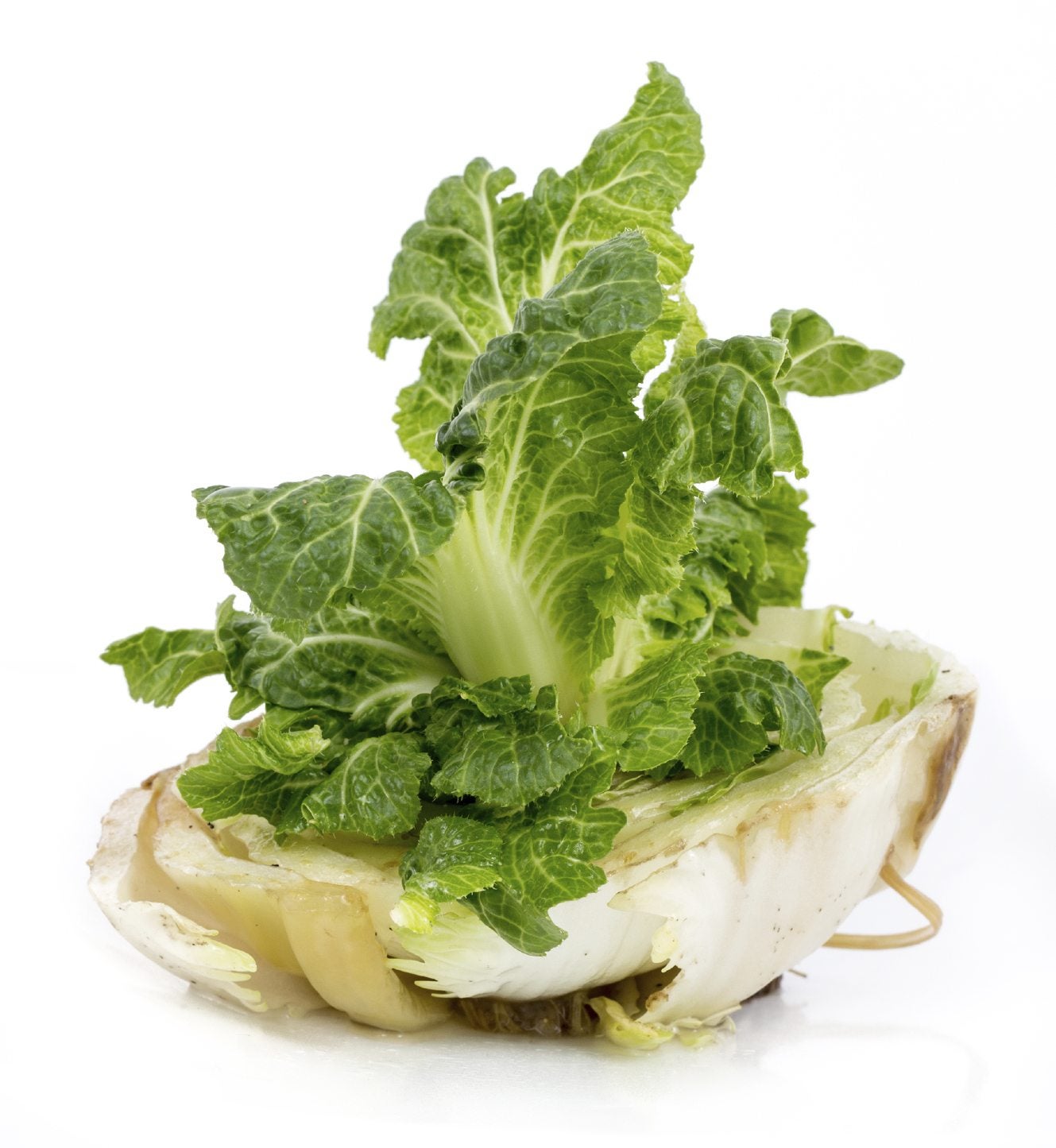Rooting Cabbage Bottoms – Tips On Growing Cabbage In Water

Are you one of those people that prep their produce and then tosses the scraps into the yard or garbage bin? Hold that thought! You are wasting a precious resource by tossing out potentially usable produce, well unless you’re composting it. I’m not saying everything is usable, but many parts of produce can be used to regrow yet another. Growing cabbage in water is a perfect example. Read on to find out how to grow cabbage (and other greens) from kitchen scraps.
How to Grow Cabbage from Kitchen Scraps
I do all the grocery shopping for my family and over the course of the last year have steadily watched the receipt stay the same size while the total grows. It’s no secret that food is expensive and getting more so. We already have a garden, so that cuts the cost of produce at least, but what else can a self-professed budget queen do to slash the grocery bill? How about regrowing some of your produce in water? Yep, some foods easily regrow in just a little water. Many others can too, but then once rooted, need to be transplanted to soil. Rooting cabbage bottoms can also be transplanted into soil, but it isn’t necessary. Growing cabbage in water is just that, growing in water. No need to transplant and the water can even be recycled water from say, cooled pasta water or water collected while waiting for the shower to heat up. This is the ultimate cheaper than dirt, DIY. All you need to regrow cabbage in water is in this sentence…oh, and a container. Simply place the leftover leaves in a shallow bowl with a small amount of water. Place the bowl in a sunny area. Replace the water every few days. Within three to four days, you will notice roots and new leaves beginning to appear. As mentioned, you can plant the rooting cabbage bottoms at this juncture or just leave them in the container, continue to replace the water and harvest the new leaves as needed. It’s that easy to regrow cabbage in water. Other vegetables can be grown in much the same manner from their discarded kitchen scraps and include:
Oh, and did I mention, that if you start with organic produce, you will be regrowing organic produce which is a huge savings! A frugal, yet brilliant DIY.
Gardening tips, videos, info and more delivered right to your inbox!
Sign up for the Gardening Know How newsletter today and receive a free copy of our e-book "How to Grow Delicious Tomatoes".

Amy Grant has been gardening for 30 years and writing for 15. A professional chef and caterer, Amy's area of expertise is culinary gardening.
-
 Looking For Plants To Give You The Soft And Fuzzies? Try These 5 Fuzzy Leaf Plant Options
Looking For Plants To Give You The Soft And Fuzzies? Try These 5 Fuzzy Leaf Plant OptionsLovers of texture, drama, silver foliage and tactile plants will adore these special sensory garden additions. These fuzzy leaf plant options will leave you all aglow
By Susan Albert
-
 Get Ready For A Summer Of Hummers! Grow These Full Sun Hummingbird Plants and Flowers
Get Ready For A Summer Of Hummers! Grow These Full Sun Hummingbird Plants and FlowersIf you’re lucky enough to enjoy a sunny backyard, make sure you are maxing out on your pollinator opportunities and grow these full sun hummingbird plants and flowers
By Tonya Barnett